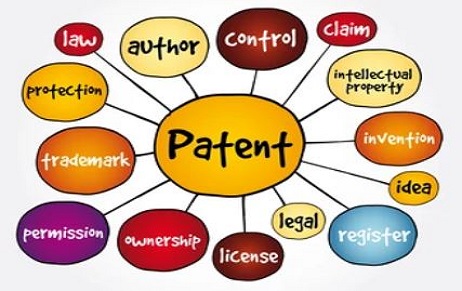Bodin argued that sovereignty is indivisible and absolute and that it should be concentrated in…
Growing Importance of Mapping Patents through Evidence of Use and Claim Charts
Introduction
Patents have become an important tool for gaining a winning edge in any competitive race, especially in times when companies are competing in innovation, they serve as both the shield and sword in the world of business. When there are innovations to be safeguarded, they act as shields by preventing others from using them without permission. In situations where firms want to be sure they are always ahead of their rivals; patents are known to perform better than all other methods of protection combined. Nevertheless, a solid patent repertoire alone is not enough for achieving it. To correctly harness a firm’s IP, it should demonstrate how its creations can become tangible items in the actual environment. This is when connecting patents to commercial goods grows more crucial, underlined by proof of use as well as claim charts. Particularly, important business decisions can be supported by mapping patent claims to different metrics.
What is Patent Mapping?
Patent product mapping, as it is called, is about clearly connecting a patent and one or more of its claims to a certain product or a specific element, characteristic, or function of that product. The practice of juxtaposing one’s own patents against their own products to evaluate level of compatibility and identifying the prominent patents within one’s portfolio while helping to determine how well these patents protect those goods sold by them is referred to as patent product mapping. During the patent prosecution stage, mapping is crucial because it helps determine which claims should be pursued further and which should be dropped. Proceeding with a lot of claims will not be economical.
There are two methods of Mapping- “Patents to Standards” and “Patents to Products”. This blog discusses about Patent to Product Mapping where researchers recognize goods, systems or services that are present in the market and which shares characteristics with the patent claim elements. Subsequently, every element of the patent claim is mapped with the appropriate characteristic of the product or the service.
Why Map Patents to Products?
Consider your patents as a treasure box filled to the brim with gold; priceless but hidden away. Making an inventory and a key is like mapping. It makes clear which patents are applicable to items, allowing you to:
- Maximize Patent Value: You may improve your licensing and enforcement strategies by giving prominence to the items that are protected by patents.
- Strategic decisions can be made by identifying the gaps in your patent portfolio and prioritizing future innovations.
What is Evidence of Use (EoU) and Claim Charts?
In patent law, evidence of use refers to facts and information that demonstrates the degree of similarity between a product and a patent claim. It can be applied to precisely recognize products or processes that may infringe a patent. The evidence of use is also beneficial during patent licensing negotiations and during litigation to strengthen patent, adding considerable value to the patent.

Claim charts are visual tools that can efficiently and effectively communicate complex technical information. They also greatly assist authorities and courts dealing with patent litigation in making decisions by helping them understand whether there has been an infringement or not as they scrutinize each aspect of the claim. A strong claim chart may be supported by expert opinions from qualified individuals in the relevant field confirming the infringing product violation of claimed attributes.
The foundation of EoUs is Claim Charts, which extend a comprehensive and articulate comparison between the claimed innovations and the infringing products. Negotiations, legal proceedings, and strategic planning all profit from this transparency.
Advantages of Superior Patent Mapping for Increased Licensing Prospects:
A good patent map helps to increase the chances of getting a license to patent. The patent maps with clear EoU and Claim charts promote effective patent licensing as they allow potential licensees to easily understand the relevance of a patent and its application to their products. By demonstrating that certain patents are being infringed, this could lead to having high chances of winning the lawsuit; hence discouraging possible violators from using it without permission. Further, providing patent valuations is one way through which patents relate to other products. This information will consequently be useful in financial reporting, making investment decisions, and engaging in negotiations. With profound knowledge about the current patent environment and its usage that they can invest in R&D activities, businesses will make wise choices on where to put their R&D efforts.
Building a Reliable Mapping Framework
Developing a system to link patents to products involves cooperation between the legal, R&D and product management divisions of a company. The following are some important actions to take:
- Making a list of products and patents: Make a thorough inventory of all the items that patents may cover.
- Formulating a Mapping Approach: Provide a transparent method for binding patents to products or goods and locating pertinent EoU.
- Maintaining Current Documents: Update mapping system often to account for modifications to the product line and to the patent portfolio.
Conclusion
In the present days, patent infringement is prevalent. Claim mapping becomes a tool for the business accused of infringement in these times of rampant infringement to support its arguments and bring an end to such unauthorized use of its intellectual property. Product mapping is going to be increasingly important as businesses look for ways to efficiently capitalize on and use their patent portfolios. EoU/Claim Charts are not simply footnotes in the complex dance of patent litigation; they are the choreography that can result in a successful performance. A company can benefit from patent product mapping by learning about potential new licensing prospects. It could be useful in directing money for R&D in the future. It can assist a company in enhancing its overall intellectual property management.
Author: Aarushi Arora, in case of any queries please contact/write back to us via email to chhavi@khuranaandkhurana.com or at IIPRD.


